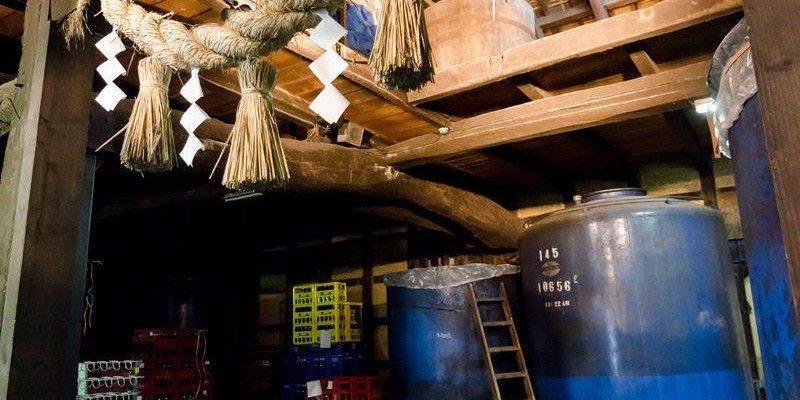“Onko-chishin.” 温故知新 What’s old is new. There may be other translations and interpretations of the expression, but this is the most succinct and it applies in spirit to the sake world.
Things cycle. Brewers experiment with new ingredients and methods. While some of those new things do end up being positive contributions to the craft, or sometimes even revolutionize the industry, many are later abandoned for a return to the older ways of brewing. That return to what worked very well for a very long time is something I have recently seen much of in the sake industry.
The trend is manifesting in two ways: one, a move from modern, flamboyant (if less than fully balanced) yeasts to classic traditional yeasts, numbers 7 and 9 in particular; two, more brewers making at least some sake using the old, traditional and labor-intensive kimoto method.
Yeast contributes to aroma primarily and flavor in a secondary capacity. Many strains of yeast developed in the last twenty years are fruity, big and laced with apple and anise. But often these end up with less structure and a more precarious balance. Some sake made with these strains exhibit bitter or burnt aspects on the back end of the palate. Old 7 and 9 are more balanced overall, cleaner in depth, and typified by aromas reminiscent of melon and banana.
This is not to say that one is unequivocally better than the other. Sure, I have my preferences. The fact that they lie in the classics may, I admit, be one driving factor behind my choice of topics for this opening.
As I made the rounds of fall sake tastings here in Japan, I saw this over and over. “We decided this year to focus on yeast number 7 and 9. Why? It’s the direction in which we want to take our sake.”
Another brewer conceded, “Well, you know, we experimented with those lively modern yeasts a bit, but I very naturally discovered that my preferences–and those of our customers–are coming back to subtler, more firmly grounded sake. To achieve that, 7 and 9 are the best.”
Recognizing modern market demands was also on the minds of many. “Those ostentatious aromas tend to clash with a lot of food. We want our sake to be enjoyed with all types of cuisine, and the classic yeasts are much better for that.” Reasons varied a bit from brewer to brewer, but the trend was the same.
Of course, there are still many who continue to favor flamboyant sake, as well as those that rely on recently isolated yeast strains. It is not as if brewers are returning in droves to the classic yeasts. Still, there were enough to make it noteworthy.
It was also interesting to see the increase in the number of breweries making one or more kimoto products. Kimoto is a method of preparing the yeast starter that was the main brewing method from perhaps seven hundred years ago (see issue #7). It was largely replaced by a time-saving, labor-saving and stress-saving technique that has been the main method since the early 1900s. Kimoto tends to yield sake that is more fine-grained in its flavor. Much of it has a subtly tart acidity that enlivens it. There are of course variations from brewer to brewer.
The draw of kimoto seemed driven by enthusiasm and passion on the part of the brewer. “I always wanted to try kimoto, but the former toji would have none of it,” explained one brewer. Still, some had more practical reasoning. “The unique acidity and character of the sake goes well with food and that is the kind of sake I want to make.” Regardless of the reasoning, it certainly seems like there is much more kimoto available than in years past.
While these two changes may not seem like much, to me they are positive and meaningful. They make me feel more confident in the sake industry and its direction. It’s not that I am against new yeasts–not at all. We simply shouldn’t abandon all that was old. And while I am certainly for kimoto, standard modern methods of brewing can achieve excellence, too.
Finally, no one is making reactionary changes. It is not as if there was major backlash from consumers. Rather, it seems that as they explored the infinite possibilities sake brewing presents, they were naturally drawn back to 7, 9 and kimoto. As I moved about the autumn tastings from booth to booth, it was surprising how many times I encountered this trend.
Even in the sake world, or perhaps especially in the sake world, what’s old is new. Again and again.
This article appeared in Sake Today 11. You can order a copy here.






